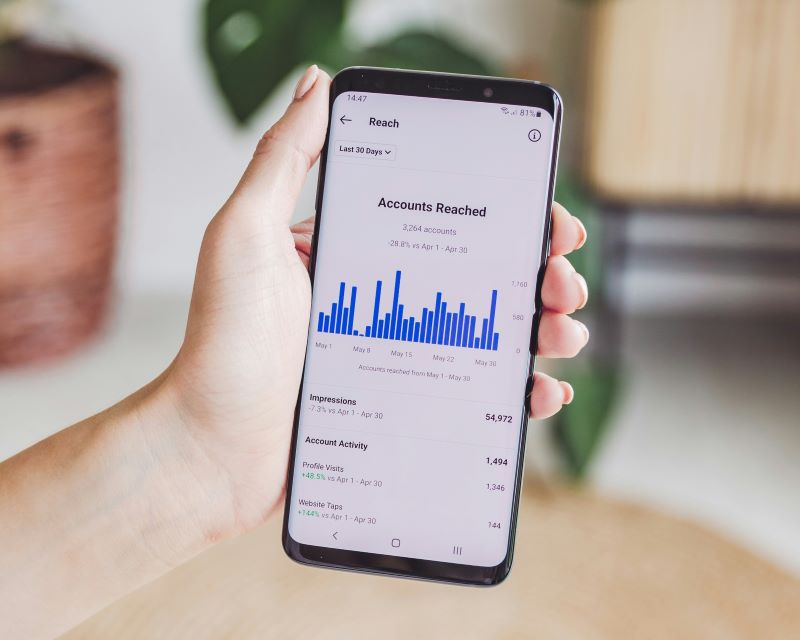Google reviews – how to get more and manage them for better marketing

You know the best way to get a 5 star rating? Give customers a 5 star experience.
That’s a simple formula, but in reality there is much more to think about to make sure you have a great reputation on an important platform such as Google.
Let’s start with the basics and then breakdown some of the common questions in a Q & A style format so that you can skip through to the information you personally need to know.
What are Google reviews and why do they matter?
Google reviews are an integral part of a business listing on Google maps. It is there by default if you have a Google listing and anyone who has their own Google account (they must be logged in) can leave a review. Obviously having good reviews is important for the professional, positive representation of your brand, but they can also benefit your business in terms of SEO – in other words, they increase your chance of being discovered online by boosting your ranking on Google’s search engine.
In the algorithm that determines your search results ranking on Google, it takes into account how trusted and well liked your business is and Google reviews are ‘social proof’ of those factors. Google’s own platform for hosting reviews is also one with high domain authority…when it comes to backlinks, the higher domain authority of the linking website, the better. The better the review (e.g. a 5 star rather than 3 star review), the more likely the site will be clicked on and receiving high click-through rates is seen as a good thing by Google when it comes to scoring your business to determine ranking.
What about bad reviews? Can I remove them? How do I manage them?
No, YOU cannot remove bad reviews. You can use the option in your Google settings to report an issue to Google (e.g. competitors are deliberately placing bad reviews) and they may take action such as deleting the review(s) or temporarily disabling review functionality.
You can however try and encourage the reviewer to remove/change/update their review (if you happen to know who they are). If you can’t message them off platform, then it’s best to try and engage with them via a reply on their review. Always acknowledge and thank them for their feedback. If they have genuinely been affected by a problem such as poor service, you should own it, apologise and if appropriate, provide a brief explanation about how that situation arose, why it is not normal and what you are going to do about it.
For example, a restaurant could explain that they were particularly short-staffed that night due to illness, but they are back up to full capacity again and reassure the customer that this was a very rare instance where they were not able to provide the overwhelmingly positive customer experience that has built their normally wonderful reputation. Suggest that they reach out to you with more detail or hint that you are able to remedy the situation should they get in touch (e.g. a voucher).
A bad review can actually help a business if their reply conveys the fact that they take complaints seriously and are willing to make amends in appropriate circumstances. It demonstrates how a business conducts themselves when the going gets tough – just like life, it’s not what happens to you that is important, it is how you handle it.
If you are pretty sure the person leaving the review was never a customer (i.e. a fake review), then your reply can do some damage control by pointing this out. Something like ‘our records show that we haven’t sold any XYZ widgets for the past two years, so wonder if you may have mistaken where you bought it from. Perhaps it was another retailer? If you are able to get in touch directly with your receipt and further details, we would be happy to look into it, however at this point we believe the item was not purchased from us’.
What about good reviews?
Yes, managing reviews also involves responding to the good ones. Think about the last time you were on Google trying to decide whether to book particular accommodation and noticed the owner thanking and commenting on all their favourable reviews with a pleasant-sounding tone. Knowing that a business owner is going to appreciate your business makes you far more likely to choose that one over another business with reviews without any replies – it’s like the management doesn’t even care…so, why would you want to stay there if you aren’t going to feel cared for?!
How do I respond to reviews in a timely manner?
It’s as simple as ensuring that your notifications are turned on to be updated about reviews in your Google Business Profile Manager settings under the ‘notifications’ option. With that set up, there is no excuse for having a bad review sit there without a response for weeks or months until someone mentions it to you.
How do I get more Google reviews?
Now that you know that more Google reviews (especially positive ones) are better for increasing your visibility and reputation online...AND you know how to properly handle bad reviews (so you are not scared to invite reviews!), you’ll want to know how to get more of them!
The trick to receiving a higher volume of Google reviews is keeping that opportunity visible so that it reminds people about the option to leave one. Some businesses have a sign at the payment counter to ask people to give a review. Some include the option to leave a review in their customer satisfaction follow up email or even make an ipad or screen available on site after the customer has received a service such as massage or beauty treatment.
Some businesses incentivise reviews (e.g. $X off your next order), some put the URL link to the Google review page on their email signature or on website (URL can be found inside your Google account under Business Profile Manager > Reviews > option to get more reviews > copy the review link and paste in the appropriate place). This Google article may also be helpful.
Helping businesses manage their reviews appropriately is one of many aspects of marketing that I often get involved with as part of Flex outsource marketing packages. These small, but important, responsibilities can sometimes fall through the gaps if a business hasn’t got a dedicated marketing resource. If you are looking for ongoing support or guidance for day to day marketing of your business, please get in touch.
The best way to make sure you don’t miss any Flex Marketing articles like this one is to subscribe to my enews, which is a quarterly round up of insight straight to your email box – you can sign up here.


